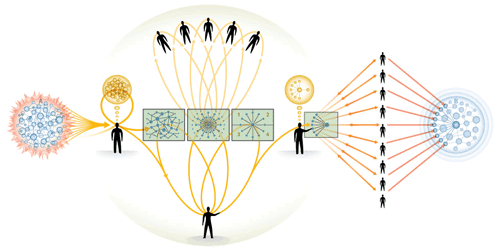
I live in a part of Vancouver you’d probably call skidrow. It’s denizens are beggars, junkies, strung out prostitutes, the homeless, and the mentally ill. Most of these folks own nothing and have no income. And most of them depend on the neighbourhood’s various social services for bare survival. Most Vancouverites shuddler at the thought of coming to Main and Hastings. But despite the area’s deep social and moral problems, it hardly lives up to (or down to) its reputation. Indeed most of these sallow wandering souls are harmless and pass right through you on the street.
My neighbourhood lies right on the edge of a spreading downtown gentrification. Vancouver’s isn’t really the planned-and-scheduled-land-developer-mega-project sort that most cities buy (I saw this in Dallas recently, and it felt about as natural as a snowy Christmas tree in Tucson). Rather, Vancouver’s is a more organic gentrification, the kind that happens as the city’s physical core fills and expands pushing its edges out slightly further with each year.
However my neighbourhood might not be gentrifiable. All of the social service the homeless and desperate need are right here. So it will be very interesting to see how the tension between the homeless clinging to the few entitlements they feel they have and the aspirations of a new neighbourhood wanting to realize its larger, cleaner potential.
I bring this up as a paralell to what seems to be happening in some Indian cities when information age riches clash with stone age poverty over the right to live in the same place. In Mumbai developers who take land to build fancy new condos have started to set aside some of the land to build homes for the shanty dwellers they displace–a strategy that would find more than a few supporters here.
However its not all milk and honey in India’s free-homes-for-the-destitute experiment. The new living arrangements apparently destroy the intimate social connections that grew like weeds in the old shanty–connections that in many ways were the only things of value those people had. Well the old shanty dwellers ain’t exactly thrilled with their new digs as a results.
This is interesting because…
- its a great lesson in unintended consequences
- its also a great related lesson in the limits of design and human intentionality
- and lastly it makes me wonder about how any similar homes-for-the-homeless plans might work out here
Do check out the slideshow





